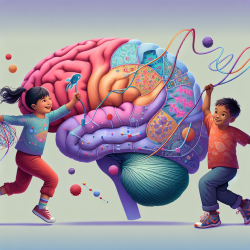Introduction
As practitioners dedicated to supporting children with developmental coordination disorder (DCD), understanding the neurological underpinnings of this condition is crucial. Recent research has illuminated differences in cortical grey matter volume in children with DCD compared to their typically developing peers. This insight offers valuable implications for therapeutic strategies and encourages further exploration into brain development.
Research Highlights
The study, "Cortical grey matter volume differences in children with developmental coordination disorder compared to typically developing children," utilized voxel-based morphometry (VBM) to assess cortical grey matter volume. The research involved 30 children with DCD and 12 typically developing (TD) children, revealing significant findings:
- Children with DCD exhibited greater grey matter volume in the left superior frontal gyrus.
- Lower motor scores correlated with increased grey matter volume in regions including the left superior frontal gyrus, frontal pole, and right middle frontal gyrus.
- Greater grey matter volume was linked to higher ADHD Index scores, indicating poorer motor and attentional skills.
Implications for Practice
Understanding these brain structure differences can guide practitioners in tailoring interventions for children with DCD. Here are some strategies to consider:
- Customized Therapy Plans: Recognize that children with DCD may require interventions that address both motor and attentional difficulties. Incorporate exercises that enhance executive function and motor planning.
- Focus on Synaptic Pruning: Consider activities that promote healthy synaptic pruning, such as those that challenge cognitive and motor skills simultaneously.
- Collaboration with Neuroimaging Experts: Partner with neuroimaging specialists to better understand individual brain development and adjust therapeutic approaches accordingly.
Encouraging Further Research
While this study provides significant insights, it also highlights the need for further research. Practitioners are encouraged to explore:
- The impact of therapeutic interventions on grey matter volume over time.
- The role of synaptic pruning in other neurodevelopmental disorders.
- Longitudinal studies to observe changes in brain structure as children with DCD mature.
Conclusion
This research underscores the importance of understanding brain development in children with DCD. By integrating these findings into practice, we can better support the unique needs of each child, fostering their growth and potential. To delve deeper into this research, please read the original paper: Cortical grey matter volume differences in children with developmental coordination disorder compared to typically developing children.










